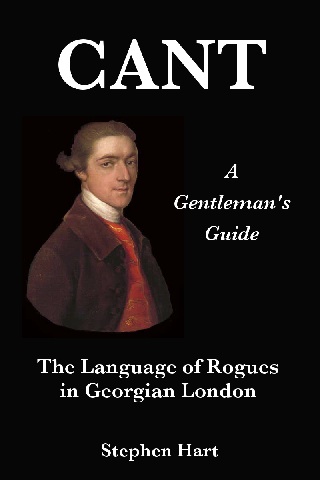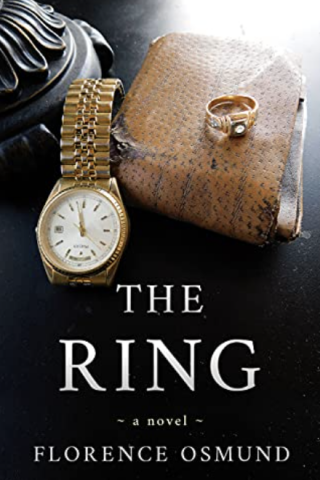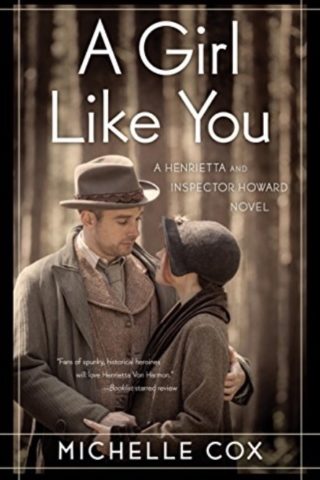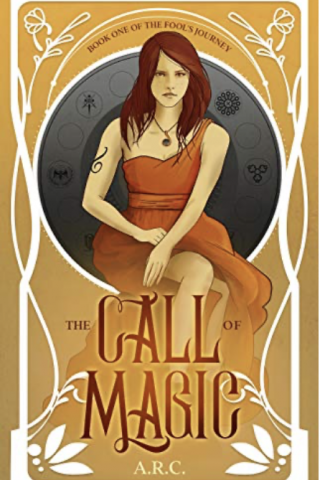
Description:
Visiting the Underworld of Georgian London but not sure how to blend in?
Can’t tell a clapperdogeon from a running smobbler?
Wouldn’t know the upright man if he noped your costard with his filchman?
You need this book.
This fascinating guide will teach you all you need to know about the vocabulary of the Rogues of Georgian London and how to function in society at the lowest level.
Along the way you will acquire some much-needed information and advice on how to make false dice; how to pick pockets; how best to rob a man on a horse; and where to find a good cup of coffee at 3:00am in the morning.
An invaluable resource for any gentleman.
e x c e r p t
[Web-Dorado_Zoom]
Cant
A gentleman’s guide
to the language of rogues
in georgian london
Stephen Hart
Improbable Fictions
Sydney, Australia
Copyright © 2014 by Stephen Hart.
All rights reserved. No part of this publication may be reproduced, distributed or transmitted in any form or by any means, including photocopying, recording, or other electronic or mechanical methods, without the prior written permission of the publisher, except in the case of brief quotations embodied in critical reviews and certain other noncommercial uses permitted by copyright law. For permission requests, write to the publisher, addressed “Attention: Permissions Coordinator,” at the address below.
Improbable Fictions
contact@improbablefictions.com
www.improbablefictions.com
Book Layout ©2013 BookDesignTemplates.com
Ordering Information:
Quantity sales. Special discounts are available on quantity purchases by corporations, associations, and others. For details, contact the “Special Sales Department” at the address above.
Cant – A Gentleman’s Guide to the Language of Rogues in Georgian London/ Stephen Hart. — 1st ed.
ISBN 978-0-9924922-0-5
Acknowledgements
I would like to thank everyone who helped in the preparation and writing of this volume.
In particular I wish to thank my wife Pamela Freeman for her unfailing support and knowledgeable advice.
My thanks also to Andrew Taubman and Stephen Bourke for their many suggestions, all of which have improved this work immeasurably.
And finally, I would like to thank the late Mr Jonathan Wild, master criminal of the early 18th century, who first inspired me to study Thieves’ Cant and without whom this book would undoubtedly never have been written.
Table of Contents
Chapter One
Introduction
Planning to visit Georgian London? You’ve collected some period money, got yourself kitted out with the appropriate clothes and had your inoculations. You have had your inoculations, haven’t you? If not, go and do it right now. There are some nasty diseases and the environment is not healthy.
But one thing is missing. As well as the grand buildings in the West End, you want to see something of the seamier side of life. To do this, you have to blend in, and to blend in you have to know the language.
Canting, Flash Lingo, St Giles’ Greek, Pedlars’ French – the language of the London Underworld. You need more than just a few words.
Frankly, you can go into a flash ken and say bene darkmans but unless you can tell a clapperdogeon from a running smobbler the dambers will know you’re half flash and half foolish and if you don’t buy a brush the upright man will turn you over to a miller and you’ll be taking an earth bath in a wooden surcoat before you know it.
Fortunately, you can avoid this fate with a little effort. A few hours study of this volume will enable you to pass as a bowman prig, even in the lowest company.
Don’t be a sapskull. Carry it with you at all times.
Digressions
At intervals in this volume I have digressed into other topics that I think you may need to know to make your trip a more enjoyable (and survivable) experience. If you have done your own research before setting out, feel free to skip them. I shall not be insulted.
Stalling the Rogue
There is a very ancient ceremony called Stalling the Rogue to initiate a candidate into the society of rogues. It is described as follows:
The upright man takes a gage of bowse and pours it on the head of the rogue to be admitted; saying:
I, A.B. do stall thee B.C. to the rogue; and from henceforth it shall be lawful for thee to cant for thy living in all places.
It is unlikely that you will ever be stalled but at least when you have read this book you will know who the upright man is, the nature of bowse and why you might want a gage of it. And you never know. Strange things can happen in big cities and Georgian London is one of the biggest and strangest on the planet.
Chapter Two
Getting Started
Greetings
Lightmans and Darkmans are, of course, the Day and the Night. Night may also be referred to as Blindman’s Holiday.
Bene means good. Buff here is an adjective with man (or cove etc) implied. A buff person is one who stands buff – is strong and reliable.
Depending on the time of year, you can comment that the weather is Ard (hot) or Znees (frosty) or that there is a Scotch Mist (soaking rain).
Even among rogues, a comment on the English weather is always an acceptable way to start a conversation.
Good and Bad
Bene or Bien (pronounced ‘bean’) is a general term for good. Comparative (better) is Benar and Superlative (best or very good) is Beneship. It can be used in many contexts:
A similar term is Rum. The modern meaning has shifted to mean ‘Odd’ but in Georgian England it means ‘Good’.
Bene generally applies to people; Rum applies to things, although the rule is not absolute. For example:
The opposite term is Queer meaning bad.
Queer can apply to both people and things.
A rogue may be referred to as a Queer Cove. In this sense it is descriptive rather than pejorative. It can be used to describe roguish activities. For example:
Men and Women
The terms for men and women are extensive and will be covered in more detail in later chapters. The following are a few of the basic terms:
Now that you have a general idea of how this works, it is time to dive in and start learning some serious vocabulary. Alcohol is always a good place to start.
Chapter Three
Buying a Drink
Time travelling is thirsty work so, shortly after arriving, you are likely to need a drink. The terms alehouse (which sells drink only), tavern (food and drink) and inn (food, drink and accommodation) are perfectly acceptable but there are some other terms you may hear, which are presented below. Georgian London has hundreds of these establishments. You should have no trouble finding one.
There are a large number of terms for drink and drinking. Whilst there is no need for you to use them all, you should at least recognise the terms when you hear them. Don’t forget that you can use Bene, Rum and Queer as additional descriptors. A Bowsing Ken is an alehouse but if you like it you can describe it as a Bene Bowsing Ken.
Digression: Taverns
There are one or two taverns that might be of special interest to the gentleman time traveller.
The Mitre in Fleet Street was Dr. Johnson’s favourite supper-house and his coterie included Oliver Goldsmith, Thomas Percy, John Hawkesworth and James Boswell. If you are in the mood to be richly insulted by an eminent lexicographer you need do no more than attempt to interrupt the good Doctor’s dinner.
The Rose Tavern in Covent Garden was a favourite venue in the early Georgian period for dramatists and poets. Poet and playwright John Gay (famous for The Beggar’s Opera) was a patron.
One inspired if drunken evening, Gay and his friends concocted a popular love ditty, entitled Molly Mogg of the Rose, in compliment to the then barmaid.
The Rummer is located between Whitehall and Charing Cross. If you are in London before November 7th 1750 (when it burned down) it is well worth a visit.
It is, among other things, the site of the first recorded robbery by escapologist Jack Sheppard (executed in 1724) from whence he stole two silver spoons.
If you happen to be in Pall Mall on 26th January 1765 and aren’t upset by the sight of blood, you might care to visit the Star and Garter and check out the duel/drunken brawl between Lord Byron (the 5th Baron and grand-uncle of the more famous poet) and his soon to be late friend Mr Chaworth.
In an undignified scuffle in one of the rooms, Byron ran his sword through his opponent’s stomach, causing him to expire the next day.
More importantly, in 1774 the tavern was the meeting place of the first cricket club where Sir Horace Mann (Kent), The Duke of Dorset (Surrey) and Lord Tankerville (Hampshire) laid down the first set of rules of the game.
If you are interested in boxing, the Castle Tavern in Holborn is, in the later Georgian period, a must see. It was the headquarters of the Prize Ring, kept by two of its heroes, Tom Belcher (until 1828) and, thereafter, Tom Spring.
The Daffy Club was inaugurated here by a Mr James Soares for its members to enjoy gin (daffy) and sports. It met in the long room beneath the portraits of pugilistic heroes, including Jem Belcher, Burke, Jackson, Tom Belcher, Joe Ward, Dutch Sam, Gregson, Humphreys, Mendoza, Cribb, Molyneux, Gulley, Randall, Turner, Martin, Harmer, Spring, Neat, Hickman, Painter, Scroggins and Tom Owen and also Jem Belcher’s dog, Trusty, who apparently rated in this august company.
If you want to try your luck in low company you can visit the Queen’s Head in Duke’s Court, Bow Street but more study of this guide is recommended before you do so.
If you don’t know what you are doing you are likely to Catch a Cold or get into trouble.
Don’t Sit on Thorns – we shall get there soon enough.
The tavern is known locally as the Go Shop due to their serving gin and water in three-halfpenny bowls known as Goes.
Inns and Taverns
If you think the landlord will let you run a tab you can ask to Hang it up or to Walk up the Wall. At the end of the evening you pay your Scran.
If you really want to be popular you can offer to Stand Huff or pay for everyone’s drinks. The alternative, to Lush at Freeman’s Quay, is to drink at another’s expense, but this is seldom as well appreciated.
Tavern Workers
Note that an innkeeper can be referred to as a Buffer rather than a Bluffer. However, as this is also a term for dog, it is best avoided.
Drinks
There are many different terms for drink.
Beer, Brandy, Gin and Wine
The most popular drinks are beer or ale, gin and brandy, but many drink wine and there is a variety of punches.
Beer needs to be divided into strong beer and small beer – the latter being quite dilute. The enormous popularity of gin is shown by the number of different terms for it.
Don’t worry if you can’t remember all these terms. A general selection will suffice.
Digression: Gin
The ‘Glorious Revolution’ of 1688 brought William of Orange to the British throne. Accompanying him on the ship was an uninvited guest but her presence was so familiar that no one commented on it. Her name was Madame Geneva, more commonly known in the short form – Gin. Distilled alcohol flavoured with juniper berries, it was encouraged by successive governments, which at the same time were restricting the imports of French brandy.
As the 18th century got going, gin became more and more popular and drunkenness became common to the point of affecting the economy through lost labour. Moralists and politicians joined forces to try and bring this foreign lady to heel but she refused to go quietly.
Compared to malt distilling (for, say, whiskey), producing gin is fairly simple and it could be produced cheaply in back rooms. When an Act in 1729 attempted to tax gin, the excise men had the devil’s own job tracking where it was being made. Moreover, the Act defined gin as spirits to which juniper berries had been added. The rogues of London, no fools, simply left out the juniper berries and carried on. The poorer people of London were prepared to drink what was effectively raw spirit if it were cheap enough.
Determined to dig itself into a hole, the Government, in 1736, brought in punitive taxes of 20 shillings to the gallon and required £50 for an annual licence to sell gin. People ignored it.
Informers were encouraged at £5 a time. This resulted in the Magistrates’ Courts being nearly overwhelmed, organised gangs of informers, mob riots and lynchings (of said informers).
The government introduced more and more harsh measures to even less effect. The Riot Act was read and the mobs ignored it. Madame Geneva’s supporters were manning the barricades.
In 1751, Josiah Tucker of Bristol calculated that the annual amount gin cost the economy was three million, nine hundred and ninety-seven thousand, six hundred and nineteen pounds, and eleven pence halfpenny. While it is a wonderful example of spurious accuracy, the round sum of four million pounds is still impressive.
Sanity eventually prevailed. The Gin Act of 1751 cut licences and excise down to almost nothing and suddenly it became easier to do things legally. There were restrictions on precisely who could get a licence and it took a while to come fully into effect but by the end of the 1750s the Lady had achieved respectability and had settled down to become a tolerated member of society.
Other Drinks
Non-alcoholic Drinks
Three pieces of advice:
- Stay away from cheap gin – it is generally adulterated and may kill you
- Don’t drink All Nations unless you have a really strong stomach
- If you are drinking Purl, make sure the Bluffer goes easy on the wormwood
Vessels and Quantities
Glasses or bowls that are full to overflowing are called Bumpers or Facers. Empty bottles may be referred to as Dead Men or Marine Officers (the latter being regarded as completely useless by other seamen).
Make sure you hang on to any tankard you are served with. If a Clank Napper (a thief who steals tankards) runs off with it you may be blamed and have to pay the cost of replacement.
Levels of Intoxication
Stages of drunkenness range from the early, cheerful stages (Chirping Merry) to total incapacity (Floored).
A drunken man may be described using any of the above. He may also be described as a Bingo Boy (or Mort if a woman), an Ensign Bearer, a Guzzle Guts, a Piss Maker, a Swill Tub, a Tickle Pitcher, a Toper or a Toss Pot.
An excess of liquor may result in any of the following:
Watch out for anyone described as a Vice-Admiral of the Narrow Seas – it refers to a drunk who urinates under the table into his companions’ shoes. Sit near somebody else. Also, don’t be a Rat (get taken up by the Watch when drunk) – the overnight accommodation in the watch house is most uncomfortable. Better not to get more than Half Cut if you can manage it.
Remember that a Gage can be either a pint or a quart. If in doubt, stick to Nips (half-pints).
Chapter Four
Money
Before we go any further it is time to discuss money.
For anyone used to a decimal system, the old English Imperial units can be a little tricky. Your basic unit is the penny. There are twelve pennies to the shilling; twenty shillings to the pound or twenty-one shillings to the guinea. A quarter of a penny is known as a farthing. Four pence is called a groat. Five shillings is a crown and… oh never mind, you’ll soon pick it up.
Coins and Amounts of Money
Unless you are in the latter end of the Georgian period, do not refer to sovereigns. The first one was not minted until 1817.
Banknotes
Depending on which part of the Georgian period you are visiting, you may not have much contact with banknotes.
The first fixed amount notes did not appear until 1725 and the smallest denomination was £20. The £5 note was not issued until 1793 and the £2 and £1 notes not until 1797.
As a consequence of this, there are very few cant terms for banknotes.
Flimsies and Screens are the main ones, with Queer Screens referring to forgeries.
Rag, normally the term for farthing, is also sometimes used for banknotes.
Pecuniary Status
More whimsical terms are Gentleman of Three Ins – in debt, in gaol, and in danger of remaining there for life and Gentleman of Three Outs – without money, without wit, and without manners.
Monetary Transactions
Borrowing Money
Hopefully, you have provided yourself with enough money but if you find you have Outrun the Constable and your affairs are at Low Tide and you cannot Touch a companion for funds, you may need to Break your Shins and visit a Two to One Shop or a Ten in the Hundred. Or, in simpler language, you need to visit a pawn broker.
Goods that are pawned for greater than their actual value are known as Pursenets. In return, the money must be repaid at an exorbitant rate of interest. The young men who take up these offers are known as Rabbit Suckers.
Disposing of Stolen Goods
Although you should not be doing this yourself, if you are keeping low company you will frequently find that your companions raise money via the disposal of stolen goods.
Note that in the early Georgian period, Fence can simply mean spend as well as dispose of stolen goods. Be sure of the context before you use or interpret it.
Spending Money
Forgery
There are two main methods of coin forgery in use in the Georgian period – minting and clipping. Minting involves casting false coins in base metal. Clipping refers to shaving metal (silver or gold) from a coin, selling the resulting metal (or forging it into new coins) and then buying goods with the original coin at its full face value.
Good money is referred to as Rum, bad money as Queer.
A Nigler is one who clips coins; the process is called Nigging.
A Figure Dancer is one who alters figures on bank notes, converting tens to hundreds.
Under no circumstances get involved in the forgery of money. It is not just a felony, it is High Treason and remains so until 1832. If convicted you will be drawn on a sledge to the Tyburn gallows, hanged then cut down, have various body parts cut off and eventually have your body chopped into quarters. Generally speaking you will not be cut down from the gallows until you are dead, but you might be unlucky.
Chapter Five
Food
The majority of people in Georgian London, particularly earlier in the century, do not cook. They have no facilities for doing so.
There are plenty of eating establishments and takeaway food abounds.
It is time to visit a Hand and Pocket Shop, an establishment that will provide food in return for ready money. You can find them everywhere.
Digression: the Dangers of Food
There is a profession you hardly ever see in Georgian London – food inspector. You should think through the implications of this before going out and ordering food.
With a burgeoning population, food suppliers can sell everything they can get their hands on.
Many are unable to resist the temptation to bulk it up a little, to give it nice colours, to give it taste and, as we are in the days before refrigeration, to disguise rotting meat and fish.
Here are a few examples:
- mustard powder: mixed with flour and turmeric
- cheese: coloured with red lead
- coffee: adulterated with burnt sugar, acorns and mangel-wurzel
- tea: coloured with copper or black lead
- bread: whitened and bulked up with alum, plaster of paris, pipeclay and ground-up bones
- wine: mixed with sugar or lead to improve its taste
Ancient sides of beef can have fat applied which is then polished to make it look fresh. Fish gills can be painted with red lead to give them a fresher look. Anything and everything can be a cheat.
As for pies, the only way to be safe is not to eat them. Really. Just don’t. Consider, if you will, how the term Bow-Wow Mutton came into being.
As far as possible, try not to eat the cheapest food. You will still end up devouring harmful chemicals, exotic bacteria and intestinal tract parasites, but you should survive. Do remember to have a thorough medical checkup when you get back.
Hunger and Thirst
If you are hungry and thirsty you need to be able to say so. As with drunkeness there are degrees, from mildly Peckish to completely Gutfoundered, or from suffering a Stomach Worm to having a Wolf in the Stomach.
A great eater is described as a stout Trencher Man or a Knight of the Trencher. He may be said to Yam his food. Lenten Fare, on the other hand, describes a sparse meal. Eating in general is called Yaffling.
Ingredients
The following represents the type of ingredients you may find in your food.
Birds
Farm Animals
Dishes
Any or all of the following you can find at a good eating establishment. It is common to serve parts of an animal that are only rarely served today, such as sheep’s head and an assortment of organs and intestines.
Note that the term sandwich was not in use until 1762 when it was popularised by the Fourth Earl of Sandwich, John Montague. You can still get one before this date but you need to ask for bread and meat or bread and cheese, etc.
Digression: Turtles
Turtle, not being at this time an endangered species, is considered a delicacy. It can be enjoyed in steaks, cutlets, or fins and, as soup, clear and puree. It is served in a number of large taverns, the most famous being The Ship and Turtle Tavern, Nos. 129 and 130, Leadenhall Street.
If you are visiting anytime after 1768 it is worth making a trip to The London Tavern. It holds live turtles in enormous vats, each holding up to two tons of turtle. Instructions for keeping turtle include this advice:
Turtles will live in cellars for three months in excellent condition if kept in the same water in which they were brought to this country. To change the water is to lessen the weight and flavour of the turtle.
The usual allowance at what is called a Turtle Dinner is 6lb. live weight per head. At the Spanish Dinner in the City of London Tavern in 1808, four hundred guests attended and 2500lb. of turtle were consumed. If you can cadge an invitation to the Banquet at the Guildhall on Lord Mayor’s Day, you will find 250 tureens of turtle are provided.
Be aware that Mock Turtle soup, although available from mid-century, is not made of turtles – there are various recipes but expect calf’s brain, oysters, onions and hard-boiled egg yolks.
Tobacco
Tobacco is not strictly speaking food but its use is widespread and it is often an accompaniment to food and drink.
Smoking in the Georgian period is nearly always by pipe. Cigars were manufactured in Spain in the 18th century but only become popular in Britain after the Peninsula War (1808-1814) so unless you are visiting the end of the period, do not ask for one.
Snuff is also a popular method of consuming tobacco. A Sneezer or Sneezing Cofer is a snuff box. Snuffing is the practice of throwing snuff into the eyes of a shopkeeper then running off with any convenient valuables.










